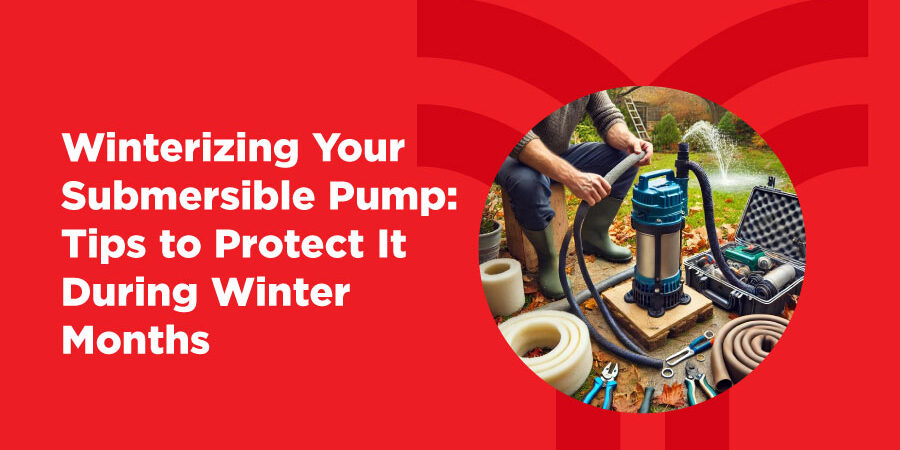Winterizing Your Submersible Pump: Essential Tips for Cold Weather Protection
Farmers, homeowners, and anybody else who depends on a submersible pump must make sure that their equipment is ready for winter as the colder months draw near. In addition to averting expensive damage, winterizing your Vertical Open-well submersible pumps guarantees that they will continue to function when you need them most for irrigation, water delivery, or other uses. Even while submersible pumps are meant to be strong and long-lasting, freezing conditions can still present serious concerns, particularly if they are not covered.
Understand the Risks of Cold Weather
Before getting into the exact methods for winterizing a submersible pump, it’s crucial to understand why this procedure is required. Water can freeze in cold weather, and when it freezes inside your pump’s pipes, it expands. This expansion may cause the surrounding equipment, pipes, and pump to sustain significant damage as well as cracks and leaks. Frozen water can significantly reduce the pump’s efficiency, strain its motor, and obstruct its flow.
Wells, ponds, and other water sources where the water may be exposed to below-freezing temperatures are common places for submersible pumps to be found. If the temperature lowers sufficiently, even if the pump and its parts are submerged, they may freeze and cause major operating issues.
Turn Off and Disconnect the Pump
Turning off and unplugging your submersible pump from its power source is the first step in winterizing it. This crucial safety feature guarantees that the pump won’t run while you’re working on it. Since submersible pumps usually have an electrical connection, be sure to turn off the main power source to avoid any unintentional activation.
You should also unplug your pump from the water system if it is used for irrigation or any other reason that won’t be needed in the winter to stop water from entering the pump when it’s freezing outside.
Drain the Water from the Pump and Pipes
Draining any water from the pump and any attached pipes is one of the most important parts of winterizing your submersible pump. If water is left in the pump, it may freeze and expand, resulting in harm. The first step in doing this is to unplug the pump from any suitable water supply and let any leftover water drain out of the device.
Since water can freeze in these pipes as well, you should also empty the ones that are attached to the pump. Winterization of submersible pumps in wells and other bodies of water is a possibility in certain situations. In that scenario, make sure all of the pipes that are linked are empty to avoid freezing.
Inspect and Clean the Pump
Cleaning the pump before winter will help prevent any pollutants from causing problems during the cold months. The exterior of the pump can be cleaned with a soft brush or cloth. If any sediment buildup is seen, it should be carefully removed from the intake and exit of the pump.
Make sure to look for rust or cracks when examining the pump. Before winter arrives, any damaged parts should be fixed or replaced. To guarantee flawless functioning when you restart the pump in the spring, this is also an excellent opportunity to oil any moving parts that need maintenance.
Cover and Protect the Pump
It’s crucial to keep your submersible pump safe from freezing temperatures if it spends the whole winter submerged in a well or other water source. To help maintain heat, you can wrap the pump and any other exposed system components in an insulating cloth or cover. To safeguard the pipes and the pump’s motor, apply specialized insulation materials made for water and plumbing systems.
It is advisable to provide extra insulation to pumps installed in above-ground systems to shield the pump housing from freezing air and chilly winds. Additional protection may be obtained by enclosing the pump in a heated or insulated pump house or shed.
Keep the Pump Running
In some cases, especially for well pumps or systems that require water all year, it may be impractical to completely shut down the pump for the winter. When this happens, running the pump slowly or sporadically can assist protect the system’s water from freezing. Maintaining a modest flow through the system can shield the pump and pipes from freezing since running water has a lower freezing point.
If you go with this option, though, be sure to routinely check the pump for any indications of freezing and make sure the surrounding area is sufficiently insulated to reduce exposure to below-zero conditions.
One of the most important things you can do to save your submersible pump from freezing temperatures and potential damage throughout the winter is to winterize it. You can make sure that your pump stays in good operating order and is ready for use come spring by taking the time to properly prepare it. You may increase the lifespan of your pump and save expensive repairs or replacements by following these easy steps: turning off the pump, emptying the water, checking the pump, adding insulation, and keeping an eye on the water supply.
No matter how severe the winter weather may be, the best Solar Pump Manufacturers in India make sure your submersible pump can provide you with years of reliable service with the right maintenance.

